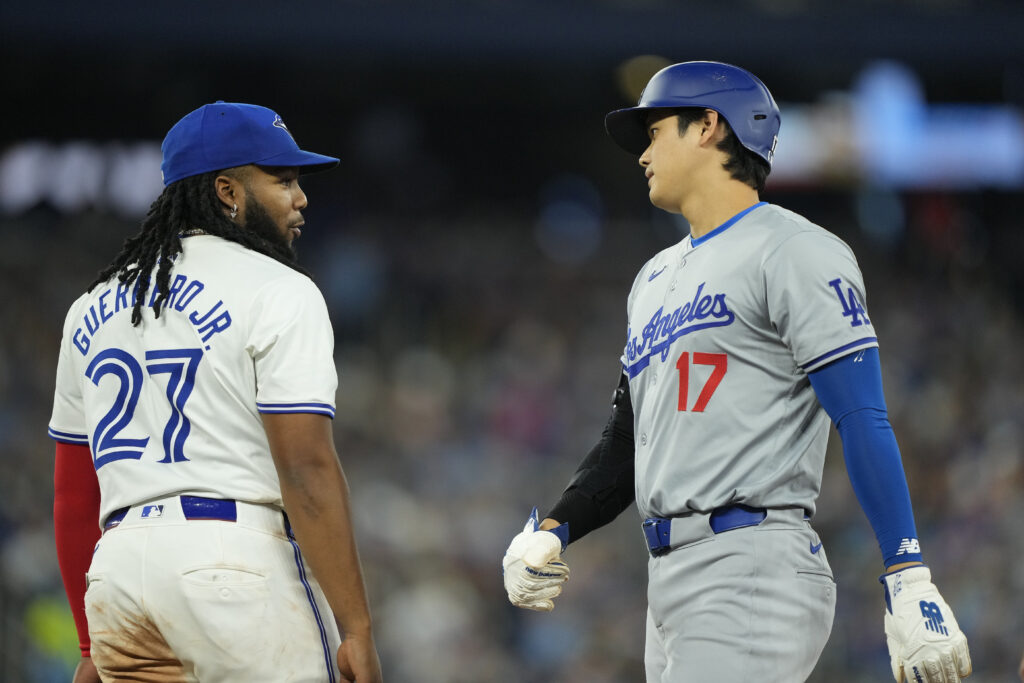This year’s World Series teams are officially set. The Blue Jays managed to come back from 2-0 and 3-2 deficits in the ALCS to defeat the Mariners in Game 7 last night, thanks to a three-run homer from George Springer. Toronto is now poised to face the Dodgers after L.A. swept the Brewers out of the NLCS on the back of perhaps the greatest single-game performance of all time from Shohei Ohtani in Game 4. How do the Jays and Dodgers match up against each other?
It’s hard not to see the Dodgers as the titan in this series. They have MLB’s largest payroll and a roster littered with superstars. They’re gunning for their third championship in the past six seasons and have been to the Fall Classic five times in the past decade. On top of that, they’ve been utterly dominant this postseason with a combined 9-1 record against the Reds, Phillies, and Brewers. A rotation featuring Ohtani, Blake Snell, Yoshinobu Yamamoto, and Tyler Glasnow is among the most frightening in the league and is firing on all cylinders at the moment.
Given that combination of postseason experience, October dominance, and an All-Star rotation, it might seem hard to imagine Toronto being able to put up much of a fight against Los Angeles. After all, this is just the Jays’ third trip to the World Series in team history, and they’ve had to battle every step of the way to get here. They won the AL East off of a tiebreaker, and went to four games against the Yankees in the ALDS before spending their entire series against the Mariners on the back foot. While Kevin Gausman is one of the more reliable veterans in the game and Trey Yesavage has been a standout as a rookie this October, a rotation featuring that duo, 41-year-old Max Scherzer, and Shane Bieber’s first handful of starts post-Tommy John surgery doesn’t exactly inspire the same sort of confidence as L.A.’s quartet.
While some of those concerns are certainly valid, the Jays have several factors working in their favor as well as they try to bring home their first championship since 1993. They’ll have homefield advantage due to winning 94 games in the regular season, while the Dodgers won “only” 93 games. Toronto also has a powerful offense that may give the Dodgers’ pitching staff all they can handle.
Vladimir Guerrero Jr. has been baseball’s best hitter this postseason with an utterly absurd .442/.510/.930 slash line and six home runs over 51 playoff plate appearances. Ohtani’s 143 wRC+ leads the Dodgers this postseason, but the Jays have four hitters ahead of him on the leaderboard: Guerrero, Ernie Clement, Springer, and Addison Barger. Springer in particular is a postseason standout who already has a World Series MVP award in his trophy case from the last time he faced the Dodgers in October. While Los Angeles has more than its share of prominent bats, Freddie Freeman (105 wRC+) has actually been slightly cold this October, and regular season standout Will Smith (89 wRC+) hasn’t looked the same while playing through a hairline fracture in his hand.
Speaking of injuries, the Blue Jays have made their deep playoff run without the services of star shortstop Bo Bichette, who is expected back in the lineup for the World Series. After a tough 2024 season, Bichette enjoyed a return to form this year, hitting .311/.357/.483 in 139 games with 18 homers and 44 doubles. Smith’s lackluster performance only serves to underscore the fact that Bichette may not perform at quite that level if he’s less than 100% healthy, but even a diminished version of Bichette should be able to boost Toronto’s lineup.
While the Dodgers have a big advantage in the rotation and the Blue Jays certainly have the hotter lineup, the relief battle may be a draw. Both teams had below-average bullpens this year during the regular season even after signing star closers (Jeff Hoffman in Toronto, Tanner Scott in Los Angeles) to hefty deals this past winter.
Both clubs have also used former rotation pieces in the bullpen to great effect this postseason, with Chris Bassitt (2 2/3 scoreless innings) and Roki Sasaki (eight innings of one-run ball) helping to offer some form of stability on the back-end. Sasaki has even emerged as the Dodgers’ closer throughout the postseason, while Hoffman (7 1/3 innings of one-run ball) has turned things around after a tough second half to dominate in October with a 42.9% strikeout rate so far. Sasaki’s run prevention has been just as impressive, but he’s done so in less dominant fashion with a strikeout rate of just 20.7%.
Who do MLBTR readers think will hoist the Commissioner’s Trophy this year? Will the Dodgers repeat as so many predicted they would this spring, or will the Blue Jays be able to secure their first championship since 1993? Have your say in the poll below:

